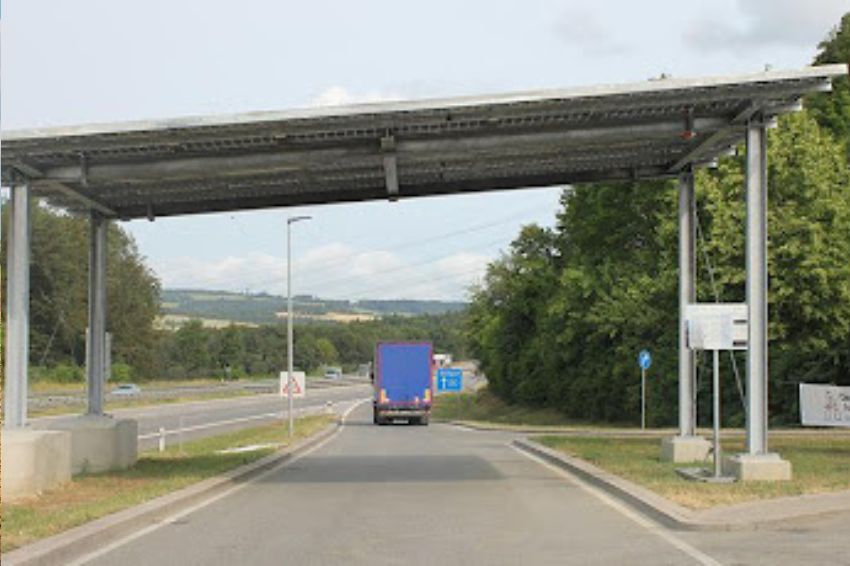GERMANY. The first solar roof built over a highway is about to open in Germany. The project is a cooperation between the Fraunhofer ISE Institute (Freiburg), Forster FF and the Austrian Institute of Technology (Austria).
Built on the shoulder of the A 81 road in the Hegau-Ost area in the state of Baden-Württemberg, the new plant has a roof area of 12 meters by 14 meters, consisting of photovoltaic modules, located approximately 5.50 meters above of the track.
The roof is expected to be completed in July 2023, according to a statement from the federal ministry of Digitalization and Transport.
“Photovoltaics on federal roads is an important step by the federal government towards climate neutrality. Therefore, we consider photovoltaics in all our future plans. With our approvals acceleration law, we will accelerate and simplify the expansion of solar plants on highways. Now it’s time to put it into practice”, announced Dr. Volker Wissing, Federal Minister for Digitalization and Transport during a visit on June 27th to the construction site.
Also present on this visit were Anne Rethmann, Financial Director of Autobahn GmbH des Bundes – responsible for the country's highways – and Professor Markus Oeser, President of the Federal Institute for Road Research (BASt).
The plant is an experimental facility developed in a research project jointly funded by the three neighboring countries Germany, Austria and Switzerland.
The structure
The company responsible for the construction and installation of the plant is focusEnergie who, in four days, erected and installed the structure. The plant has one hundred Solarwatt photovoltaic modules.
During the experiment phase, the plant will be scientifically monitored. The objective is for the structure to produce up to 40,000 kWh per year. During the test period, the impacts possibly caused by traffic will be assessed and what their effects on the solar plant will be.
Future projects
Ahead of the installation of the first pilot project, Autobahn GmbH des Bundes stated that it is already evaluating locations where future solar plants can be installed.
Furthermore, it informed that it is making it easier for municipalities, residents and investors to install photovoltaic modules in areas close to federal highways. “There is enormous potential here that we want to take advantage of in a consistent and agile way”, he highlighted in a note.
Accelerating the expansion of renewable energy facilities in transportation infrastructure is part of the approvals acceleration law. The bill presented by Federal Minister Dr. Volker Wissing was approved by the Federal Cabinet on May 3, 2023. In the planning and construction of new federal highways, the extent to which related areas and facilities can be used for such facilities will be assessed.
In addition to construction on highways, the use of noise protection barriers, common on German highways, is being evaluated for the installation of photovoltaic plants.
Potential areas are already being mapped and measures are being facilitated so that, in the future, municipalities, the population or investors can implement facilities in areas adjacent to federal highways.
According to the financial director of Autobahn GmbH des Bundes, the objective is to achieve climate neutrality in the maintenance and operation of highways by 2040.
















One Response
How is security, preventing theft, etc.? And another issue, if they decide to transport a giant load, such as plant parts, etc…. ??? How will they pass?? It has many pros and many cons… I’m still a fan of flat land….